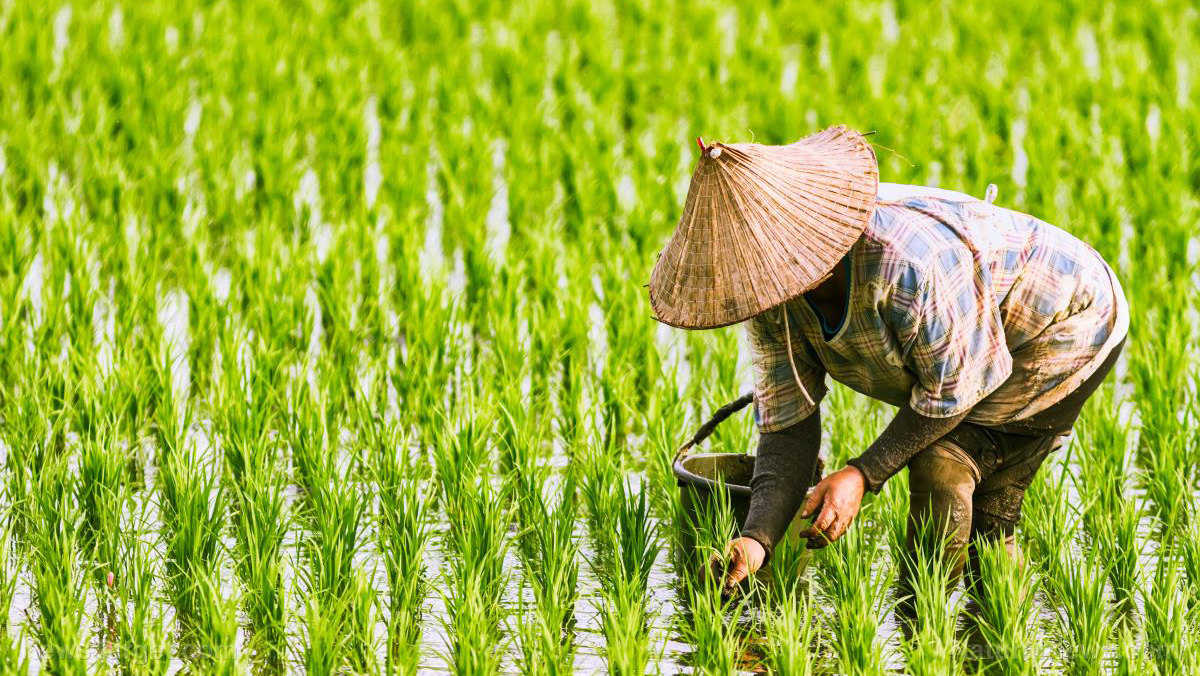Sustainable farming: 7 Indigenous practices to preserve crop and soil health
03/07/2022 / By Virgilio Marin

In an industry dominated by pesticides and synthetic products, traditional farming offers an alternative approach to protecting crops and the soil. It provides sustainable solutions to contemporary challenges, such as biodiversity loss and land degradation, without relying on harmful industrial methods.
Here are seven indigenous practices that promote sustainability in agriculture:
1. Thai rotational cropping
The Hin Lad Nai community in the Chiang Rai Province in northern Thailand restores degraded soil through crop rotation, or the planting of different kinds of crops sequentially on the same plot of land.
After periods of cultivation, community members plant the indigenous P’dav tree in degraded land. Used commonly for soil regeneration, P’dav wards off invasive weeds and grows rapidly. In just a few years, it starts shedding its leaves, which enriches the soil by keeping it cool.
The tree’s fruit also provides fodder for domestic animals while its flowers are favored by bees and other pollinators. And after five years, the tree can be felled for firewood and the land farmed productively again.
2. Iroquois intercropping
Intercropping is the simultaneous cultivation of two or more crops on the same plot of land. Farmers commonly intercrop corns, beans and squash – the “three sisters” – a practice that is attributed to the Iroquois people in the southern Great Lakes in what is now the U.S. and Canada.
The crops complement each other in many ways. Corn acts as a pole for the beans to climb around while beans “fix” nitrogen in the soil so the other plants can take it up. Squash, on the other hand, has big leaves that shade the soil to prevent evaporation and weed growth. It also has spiny leaves that discourage pests from entering the area.
In addition, the crops rarely fall prey to the same diseases since each plant belongs to a different family.
3. Aboriginal controlled-burning practices
Aboriginal communities in the Kimberley region in Western Australia manage wildfires by lighting small fires in targeted areas at the start of the dry season. The slow-burning fires reduce fuel loads in the undergrowth and create “fire breaks,” which prevent the spread of large wildfires.
This fire management method has been proven effective. For instance, when European colonizers drove Aborigines from their land long ago, large and uncontrolled wildfires started to break out late in the dry season, destroying ecosystems and affecting farmland.
4. African drought-resistant planting
Decades ago, the small West African nation of Burkina Faso revived a traditional farming technique called “zai” after a series of severe droughts. The technique involves planting in holes dug into the soil and filled with organic matter such as crop waste and manure.
The technique increases termite activity in the soil, which consequently retains more moisture when the occasional rain comes. Stone bunds built around the pits also slow water runoff. (Related: Ancient crops may hold the key to sustainable farming, improving soil health.)
Since then, farmers have been planting in zai pits to combat drought. Some even established a network of “zai schools” to share their knowledge and train other farmers.
5. Maori seed-saving protocols
The Maori people of New Zealand are currently working with organizations to prevent the extinction of plant species by turning to their traditional collection protocols.
This comes after a wind-borne fungus hit New Zealand in 2017. Known as “myrtle rust,” the fungus blighted species in the myrtle plant family, threatening to obliterate around 50 percent of the country’s native trees and plants.
Communities are now trying to save the affected species by collecting seeds under the guidance of Maori, whose traditional knowledge systems provide a good basis of which infected trees are the best to gather seeds from.
Traditional farming is a clean approach to planting that offers sustainable ways to protect crops and the soil, working with the natural environment and weather patterns. Given the harmful effects of agrochemicals on health and the environment, it’s important to find solutions like the ones listed here to address farming challenges sustainably.
Learn more about sustainable farming practices at OrganicFarming.news.
Sources include:
Submit a correction >>
Tagged Under:
agriculture, biodiversity, conservation, crop protection, crops, Ecology, environment, farming, food production, harvest, organic farming, Plants, soil health, soil nutrients, soils, sustainable farming, traditional farming
This article may contain statements that reflect the opinion of the author
RECENT NEWS & ARTICLES
COPYRIGHT © 2017 ENVIRON NEWS



















